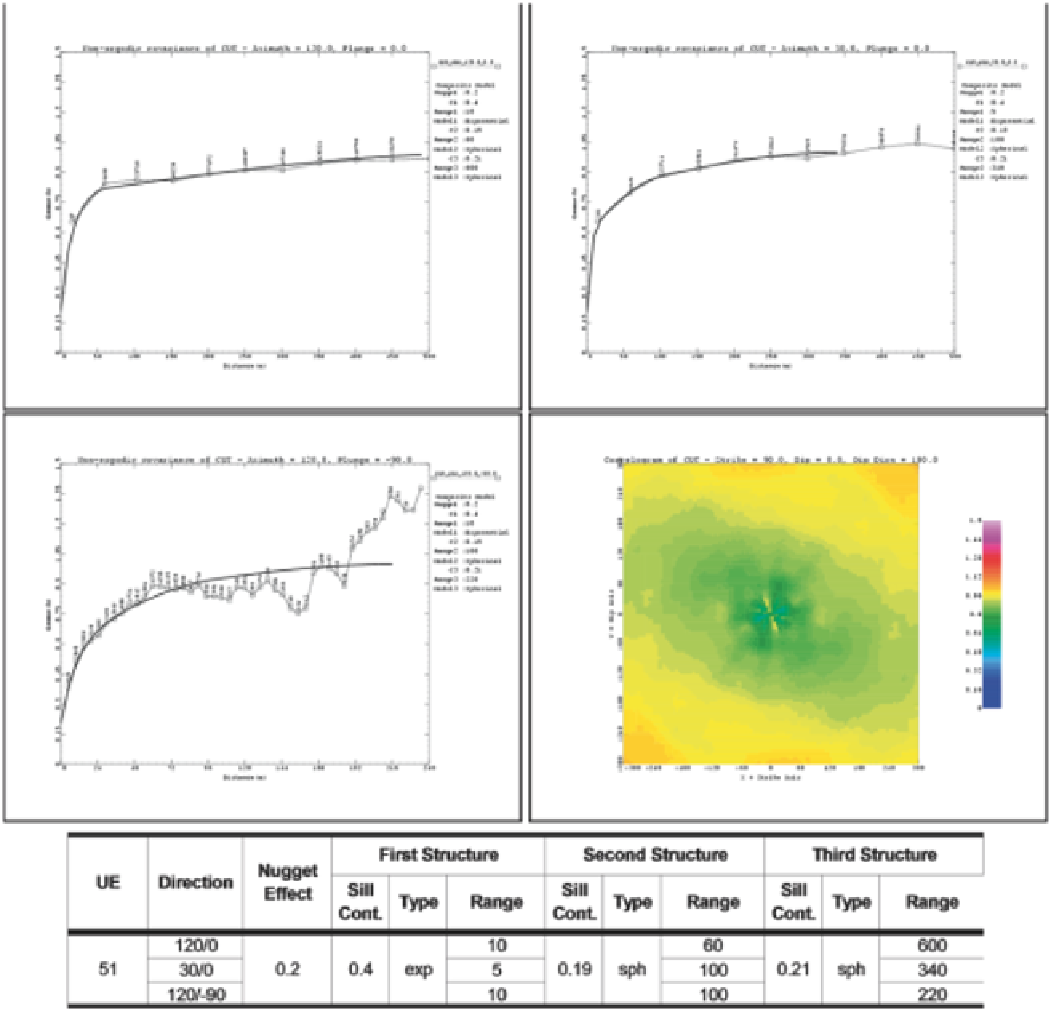Geoscience Reference
In-Depth Information
Fig. 6.9
Cu correlogram for a domain, El Pachón Project, Argentina. Courtesy of Xstrata Copper
performed: (1) a spatial, but otherwise classical, leave-one-
out re-estimation, whereby one sample at a time is removed
from the data set and re-estimated from the remaining data;
to avoid undue influence of the nearest datum in a drill hole,
one or more of the closest samples are typically not used in
the re-estimation; and (2) a subset of the data (say, 40 or 50 %
of the total) is removed completely from the data set, and re-
estimated using the remaining data.
There have been a number of objections to the leave-one-out
cross validation option (Clark
1986
; Davis
1987
; Journel
1987
;
Isaaks and Srivastava
1989
; Solow
1990
; Goovaerts
1997
):
• The method is generally not sensitive enough to detect
minor differences from one variogram model to the next.
Other kriging parameters such as search strategy, number
of data used in the re-estimation, the use or not of octant
or quadrant searches, and so on, are generally more con-
sequential than the variogram models themselves.
• The analysis is performed on samples or composites,
when in fact we are interested in a different volume sup-
port (blocks). This does not allow for any definite conclu-
sion about the final run, since the samples may not be rep-
resentative of the domain. Even if the variogram model

